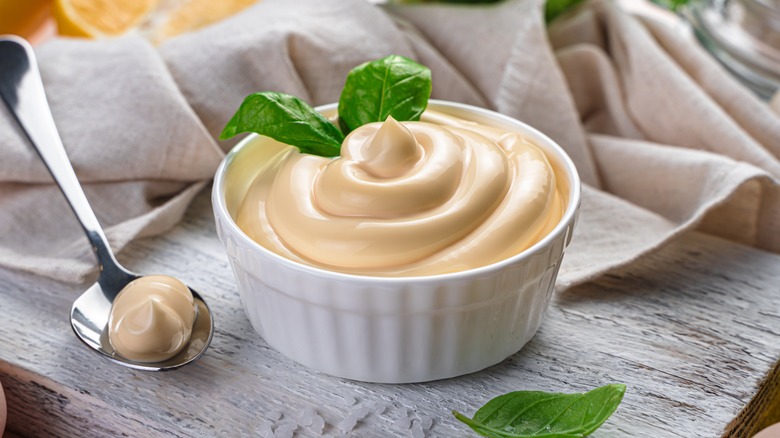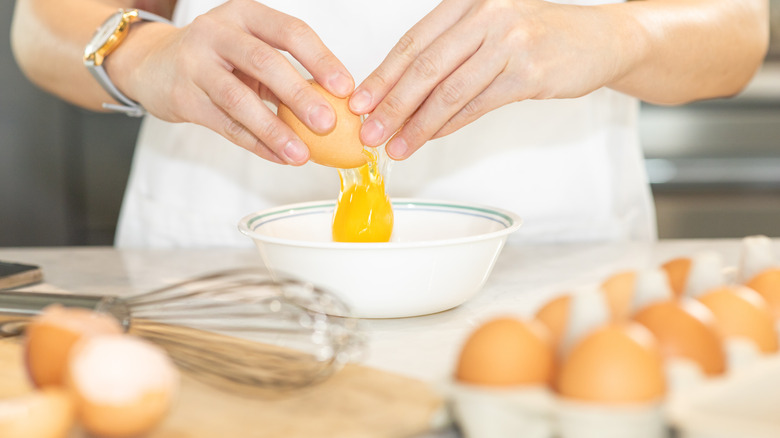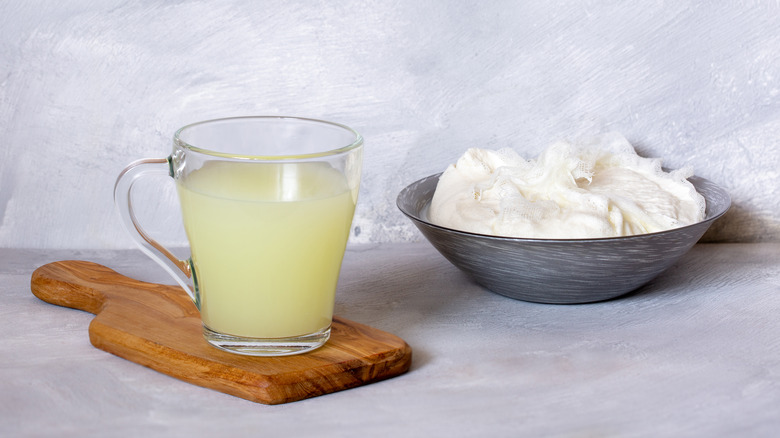Afraid Of Raw Eggs In Homemade Mayo? Just Use Your Microwave
Versatile and satisfying, mayonnaise is the perfect accompaniment for fries, sandwiches, potato salad, and many other recipes. You can even add it to baked goods, such as cakes and muffins, to ensure a moist and creamy texture. While store-bought mayonnaise is perfectly fine on most occasions, there's something quite satisfying about whipping up your own version of America's favorite condiment.
In this case, you can create your very own batch of homemade mayo relatively easily. Ingredients include one egg, vegetable oil, Dijon mustard, minced garlic, lemon juice, and salt. Simply incorporate ingredients into a large jar and use an immersion blender to mix them together. The key is to ensure the mixture emulsifies, which means that the separate ingredients mesh well enough to make a pleasing mixture. When performed correctly, you'll have a quality mayonnaise capable of putting Hellmann's to shame. However, you may be concerned about consuming raw eggs, which do carry a risk of foodborne illness. In this case, there's a simple yet effective trick you can use to avoid potential issues.
DIY mayo has never been tastier (or safer)
It's easy to mitigate the raw egg risk associated with homemade mayo when adding an extra step to your mayo recipe. In this case, simply take the cracked egg and microwave it for about 20 seconds or so. Nuking the egg portion of the recipe will hopefully be enough to eliminate the possibility of salmonella, a bacterium that can cause some nasty gastrointestinal effects when consumed (via Minnesota Department of Health). Along with raw eggs, salmonella poisoning can also occur after the consumption of raw meat or vegetables that haven't been washed properly.
While it's best to take precautionary measures to prevent foodborne illness, keep in mind that it's still exceedingly unlikely that you'll acquire salmonella from raw eggs. In fact, it's estimated that only 1 in 20,000 eggs actually contain bacteria, which means your risk is relatively low. Some people do have a higher risk, such as older adults and people with compromised immune systems, so it's a good idea to cook the eggs before concocting your mixture. You can also add another ingredient to extend the shelf-life of your DIY mayo.
Get more out of your homemade mayo with whey
In most instances, homemade mayonnaise usually only lasts about a week when stored in your refrigerator. That means your precious mayo mixture could be going to waste if you're not able to use it all in time. Fortunately, a fermented mayonnaise recipe is just the thing to extend the lifespan of the concoction to a month or so.
The secret ingredient is whey, which is a protein found in milk. Unfortunately, whey can be a little hard to come by on store shelves, but you can derive it from yogurt using a few simple steps. Take the yogurt and pour it into a cheese strainer bag, which you'll then suspend over a container. Let the bag sit for about an hour or so to ensure the liquid in the yogurt fully separates from the solid portion. The resulting gold-colored liquid can now be added to your mayo mixture. Keep in mind that you should let the whey-mayonnaise mixture rest for about eight hours to ensure the activation of essential enzymes, which will stop your mayo from going bad too quickly.


